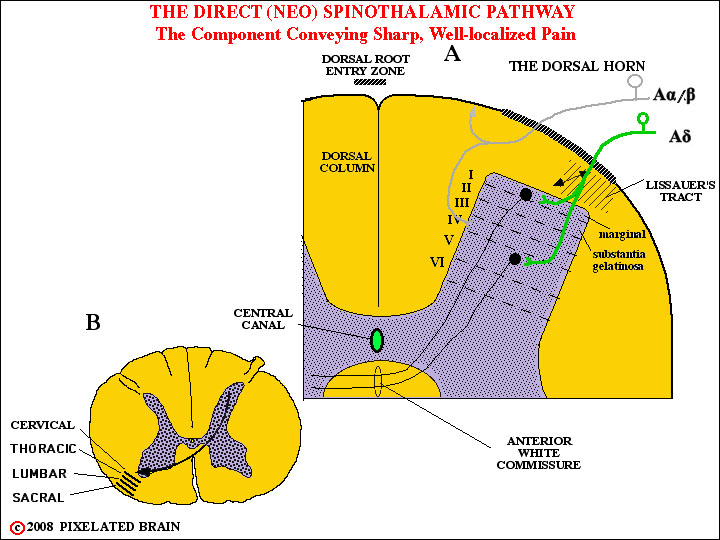MODULE 4 - SECTION 1 - THE ANTEROLATERAL SYSTEM
The term anterolateral system refers to the group of sensory pathways which ascend through the spinal cord in the anterolateral part of the white matter. While these pathways are difficult to trace, because they do not stand out on slides, it is important (from a clinical point of view) to work out the details because this is the route by which information regarding pain and temperature is conveyed from the body to the brain. All authors agree that the anterolateral system actually contains at least two pathways. The first is called the spinothalamic pathway. Because it is the newest component of the system, and the most direct route to the thalamus, it is also known as the neospinothalamic or direct pathway. The second is known as the spinoreticular pathway - also called the paleospinothalamic or indirect path. Many authors now add a third pathway to the list. It consists of ascending fibers that terminate at the midbrain level in the superior colliculus and underlying periaqueductal gray matter. It is called the spinomesencephalic tract. As we will see the anterolateral pathway differs from the dorsal column-medial lemniscus in several ways. The first two figures below illustrate the differences.
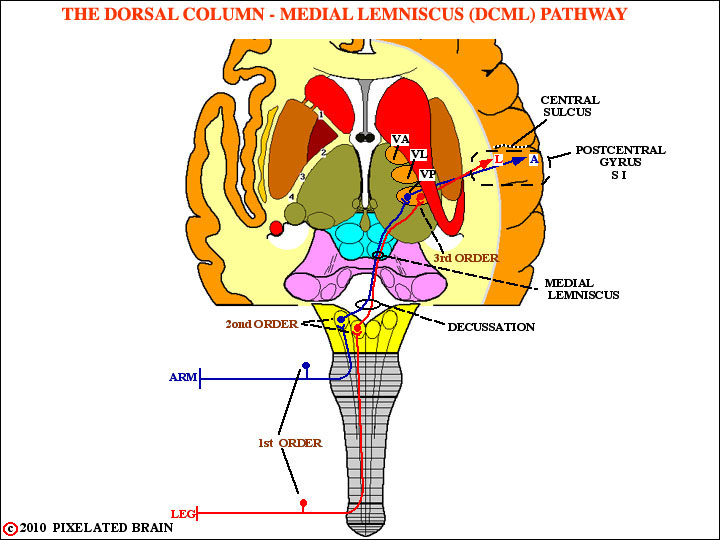
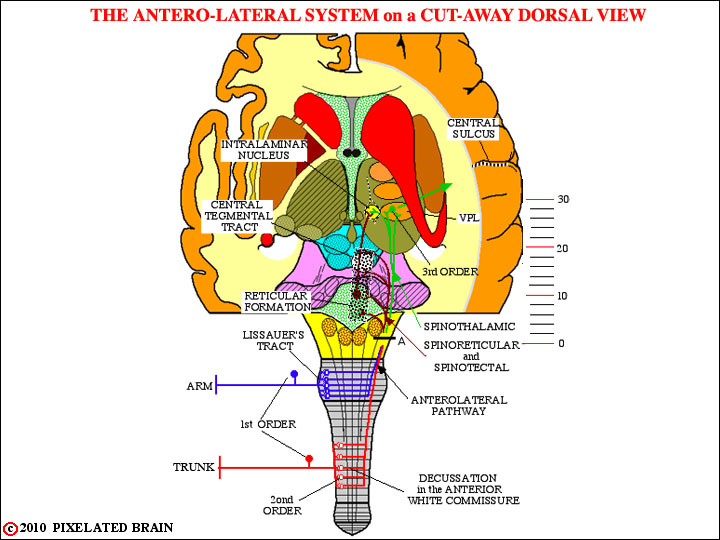
1) The axons of the first order neurons are relatively small in diameter ( A-delta or C fibers in Blumenfeld Table 7.2). They enter in the more lateral part of the dorsal root entry zone, and are represented schematically by the thin green and blue lines in Figure 3-4.
2) These axons may travel up or down the cord for several segments in the dorsolateral fasciculus of Lissauer, and then turn deeply to end on second order neurons in the dorsal horn. The manner of termination is complex, and somewhat different for each of the three tracts.
3) The second order neurons give rise to axons that cross the midline in the ventral white commissure and ascend contralaterally in the anterolateral fasciculus.
4) The pathway is somatotopically organized at spinal levels, as shown in Figure 4-2, but this organization is less apparent as the pathway ascends through the brainstem.
5) Axons of one tract, the spinothalamic one, ascend all the way to terminate in the thalamus. The other two terminate at brainstem levels.
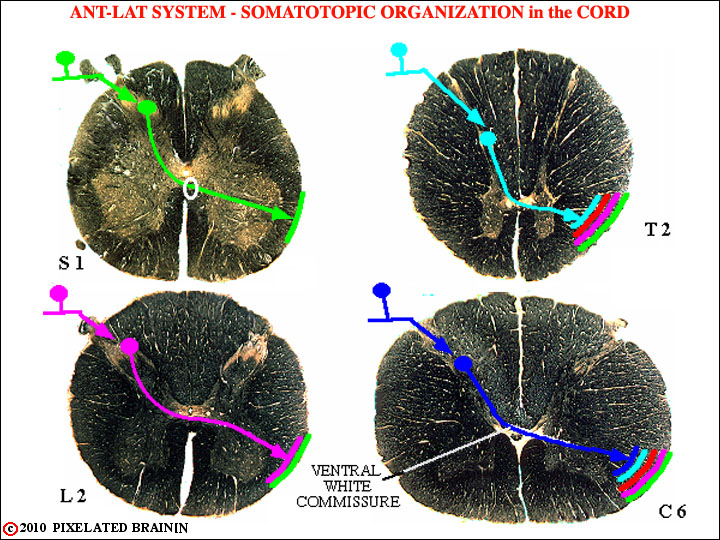
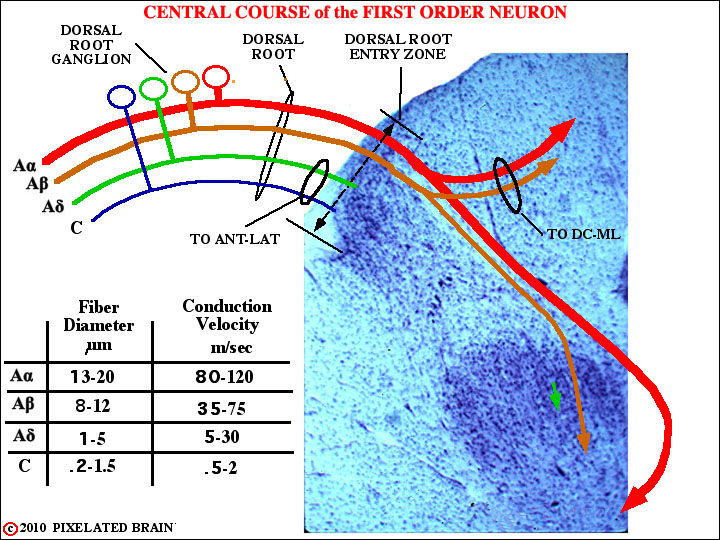
Some primary afferent C fibers convey a sensation of long-lasting, dull, aching pain or a burning sensation. It is the most difficult pain to endure and is sometimes described as "slow" because there is a brief but detectable interval between the stimulus and the onset of the pain.
These C fibers terminate in laminae II and III. Neurons in these laminae project by a multisynaptic route to lamina V.
Neurons within lamina V send axons across the midline in the Anterior White Commissure to ascend in the anterolateral pathway.
The axons in this spinoreticular division of the anterolateral pathway do not ascend directly to the thalamus. Rather, they gradually "peel off", as the pathway passes through the brainstem, and terminate on neurons of the reticular formation. Some of them ascend as far as the midbrain, ending within the superior colliculus. This region is called the tectum, and this part of the pathway is often called the spinotectal route.
Cells of the reticular formation that have received a spinoreticular input relay this information via the central tegmental tract, that terminates within the intralaminar nuclei of the thalamus. This nucleus, in turn, projects broadly to the cerebral cortex.
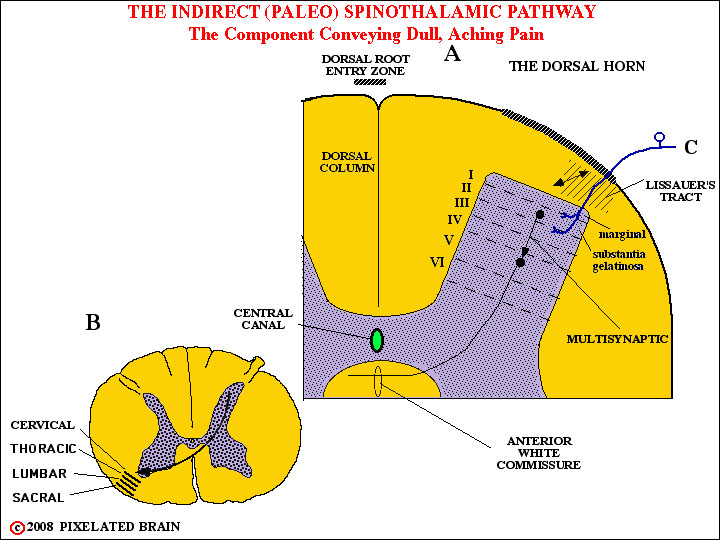


ANTERO-LATERAL PATHWAY
in SPINAL CORD
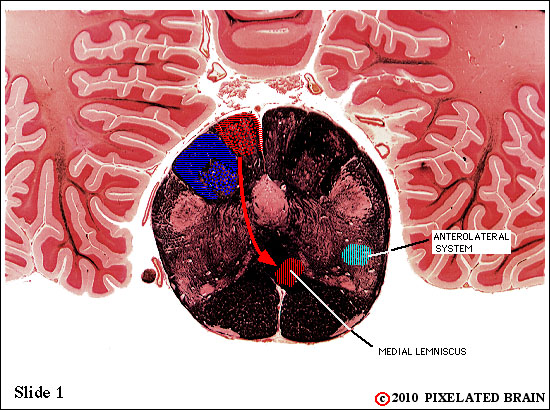
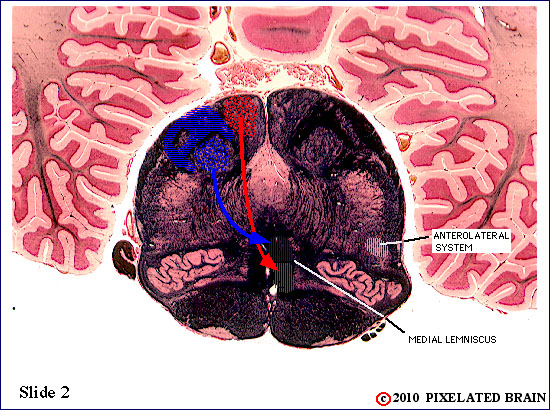
x
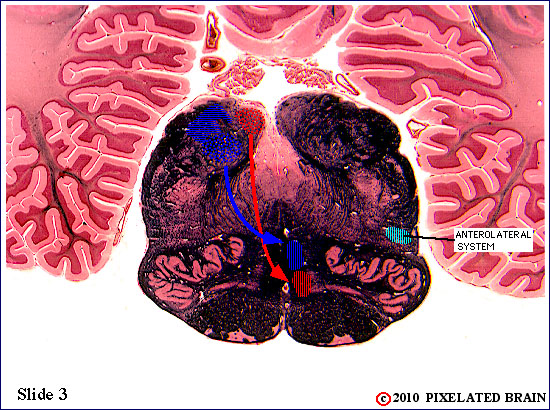
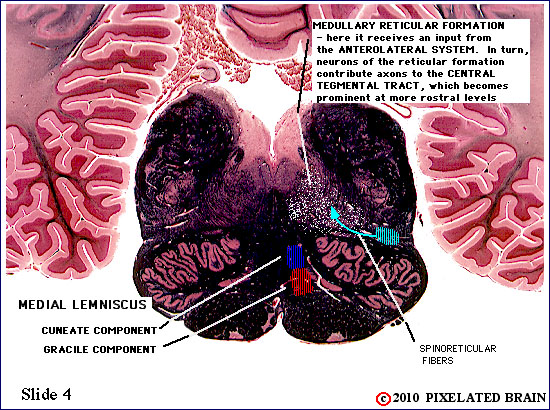

x
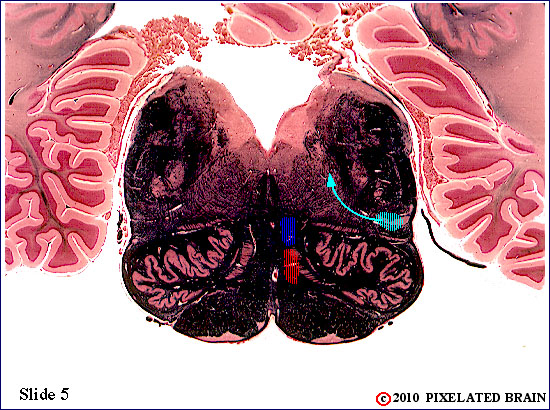
x
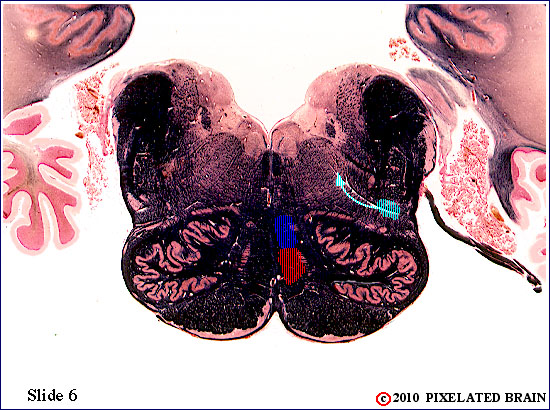
x
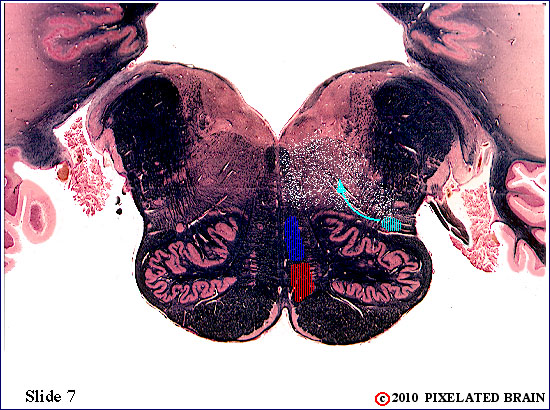
x
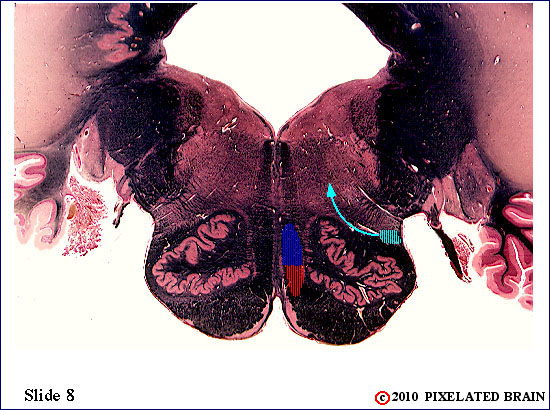
x
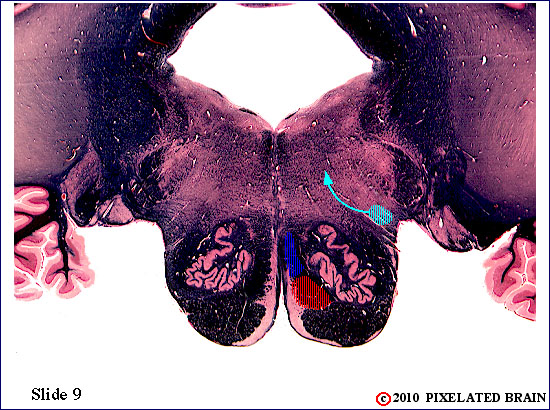
x
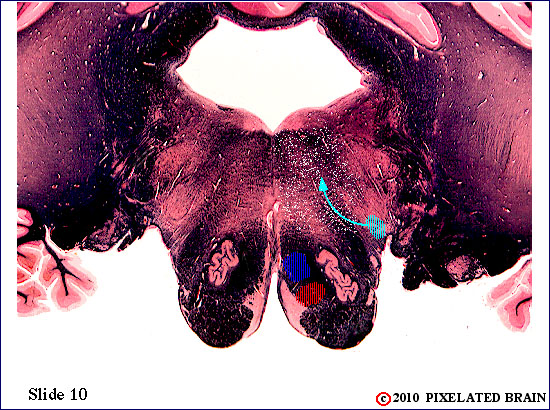

x
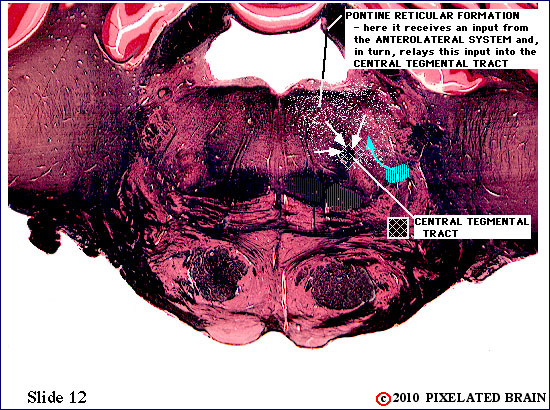
x

x
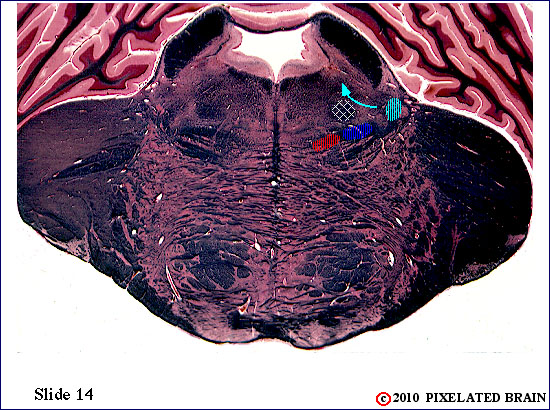
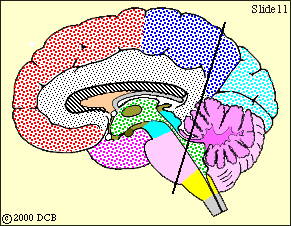
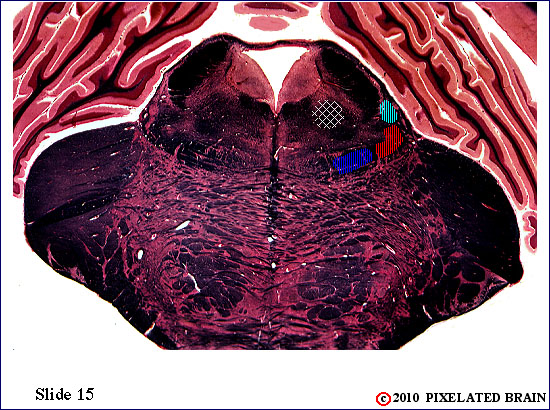
x
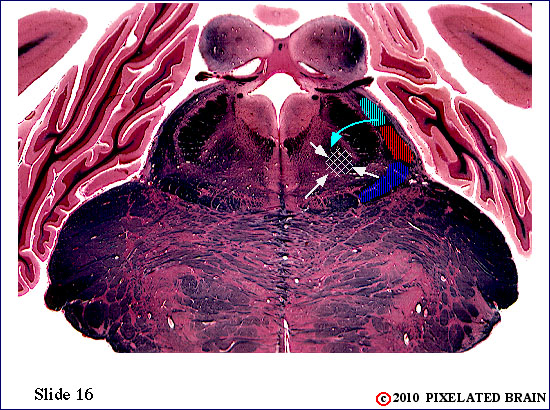
x
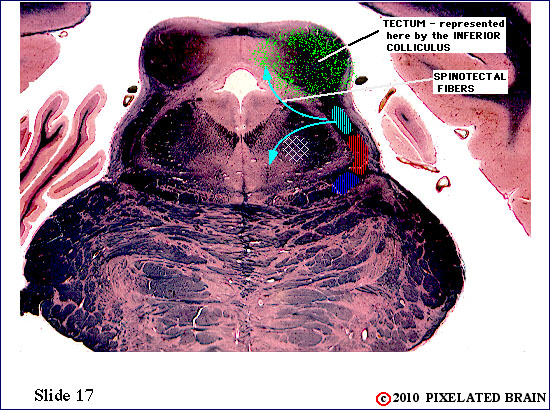
x
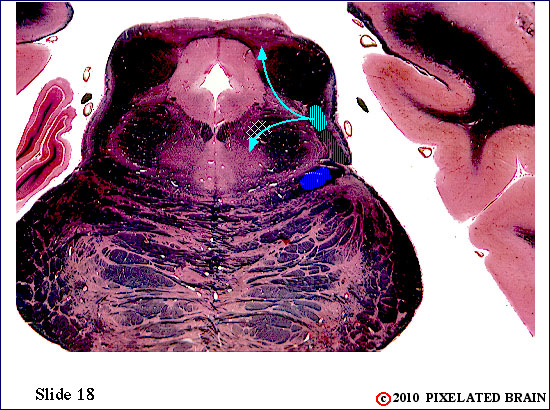
x
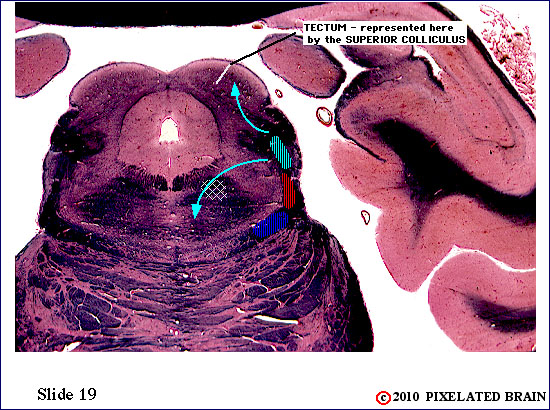
x
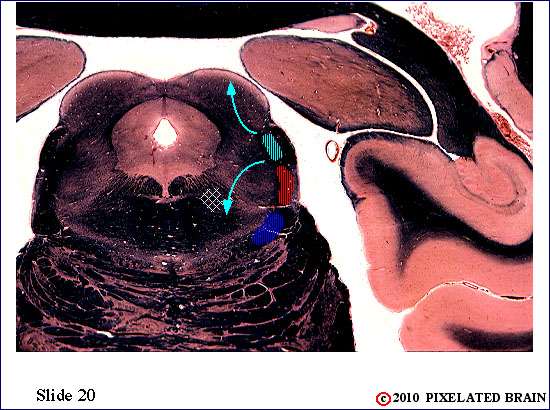
x
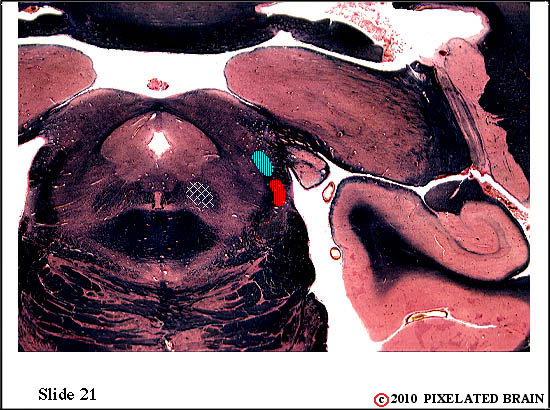


x
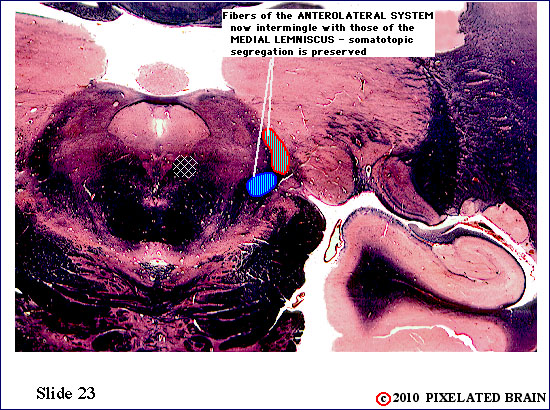
x
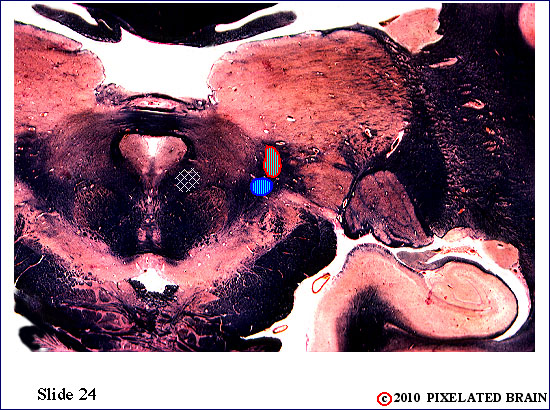
x
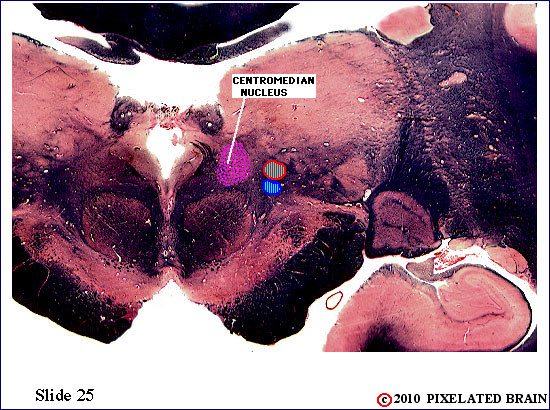
x


